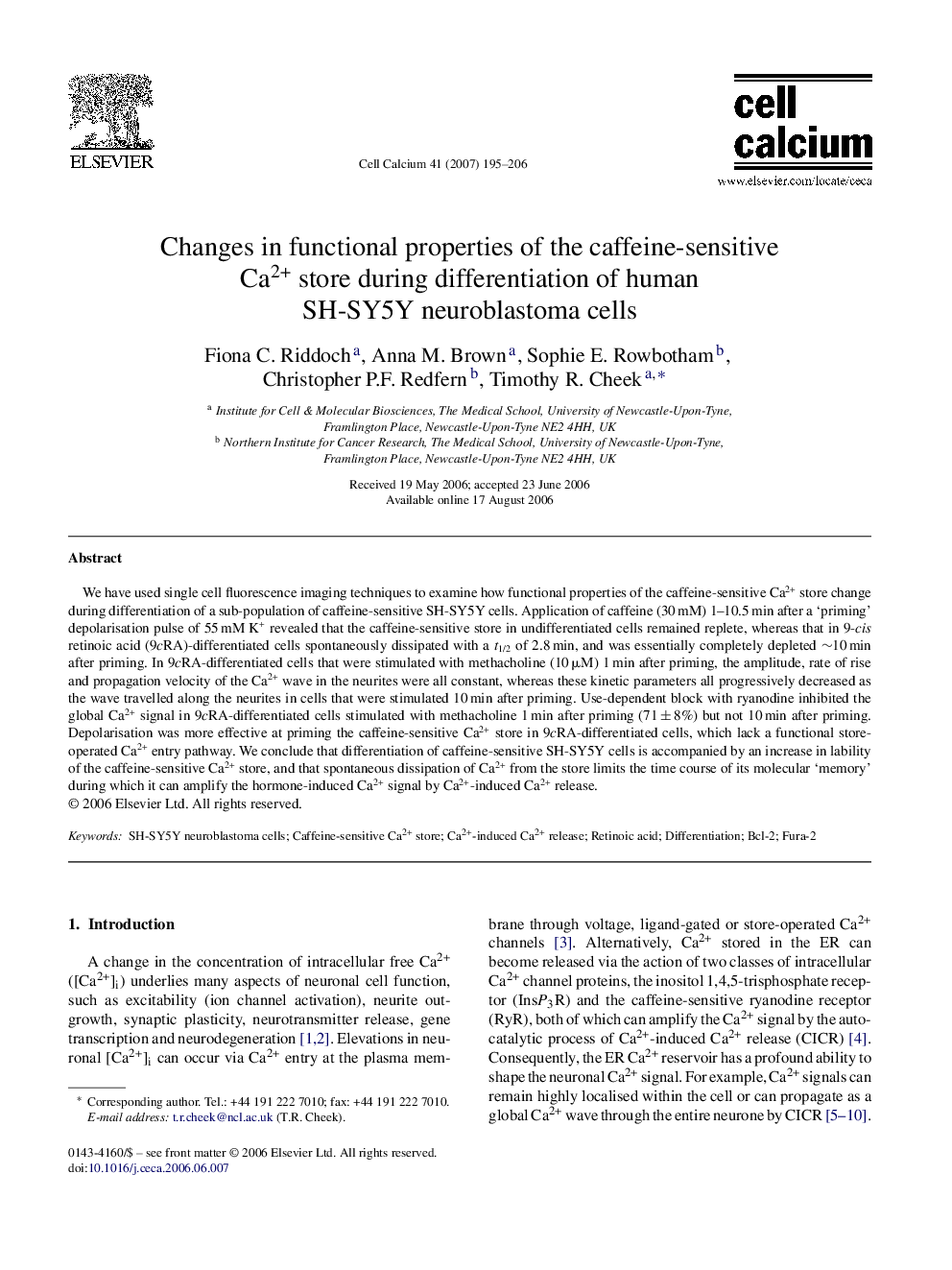| Article ID | Journal | Published Year | Pages | File Type |
|---|---|---|---|---|
| 2166616 | Cell Calcium | 2007 | 12 Pages |
Abstract
We have used single cell fluorescence imaging techniques to examine how functional properties of the caffeine-sensitive Ca2+ store change during differentiation of a sub-population of caffeine-sensitive SH-SY5Y cells. Application of caffeine (30 mM) 1-10.5 min after a 'priming' depolarisation pulse of 55 mM K+ revealed that the caffeine-sensitive store in undifferentiated cells remained replete, whereas that in 9-cis retinoic acid (9cRA)-differentiated cells spontaneously dissipated with a t1/2 of 2.8 min, and was essentially completely depleted â¼10 min after priming. In 9cRA-differentiated cells that were stimulated with methacholine (10 μM) 1 min after priming, the amplitude, rate of rise and propagation velocity of the Ca2+ wave in the neurites were all constant, whereas these kinetic parameters all progressively decreased as the wave travelled along the neurites in cells that were stimulated 10 min after priming. Use-dependent block with ryanodine inhibited the global Ca2+ signal in 9cRA-differentiated cells stimulated with methacholine 1 min after priming (71 ± 8%) but not 10 min after priming. Depolarisation was more effective at priming the caffeine-sensitive Ca2+ store in 9cRA-differentiated cells, which lack a functional store-operated Ca2+ entry pathway. We conclude that differentiation of caffeine-sensitive SH-SY5Y cells is accompanied by an increase in lability of the caffeine-sensitive Ca2+ store, and that spontaneous dissipation of Ca2+ from the store limits the time course of its molecular 'memory' during which it can amplify the hormone-induced Ca2+ signal by Ca2+-induced Ca2+ release.
Keywords
Related Topics
Life Sciences
Biochemistry, Genetics and Molecular Biology
Cell Biology
Authors
Fiona C. Riddoch, Anna M. Brown, Sophie E. Rowbotham, Christopher P.F. Redfern, Timothy R. Cheek,
